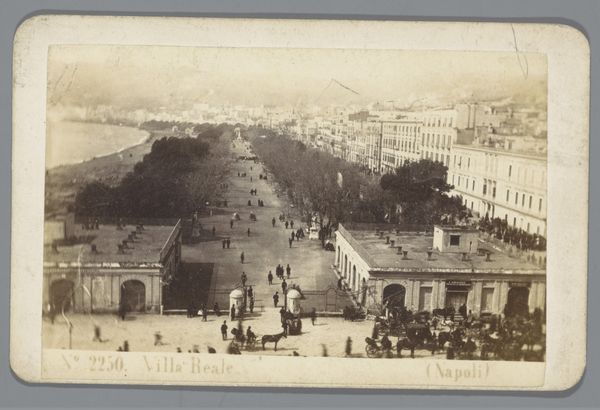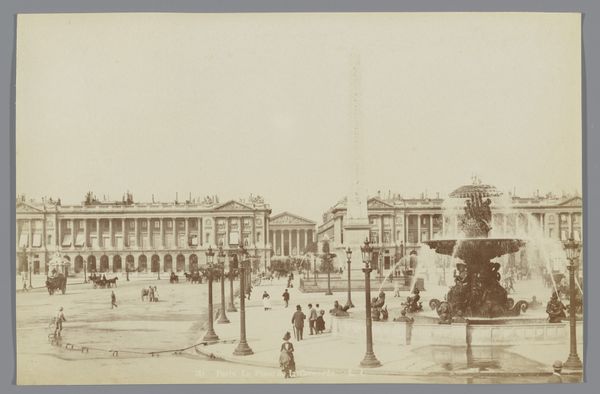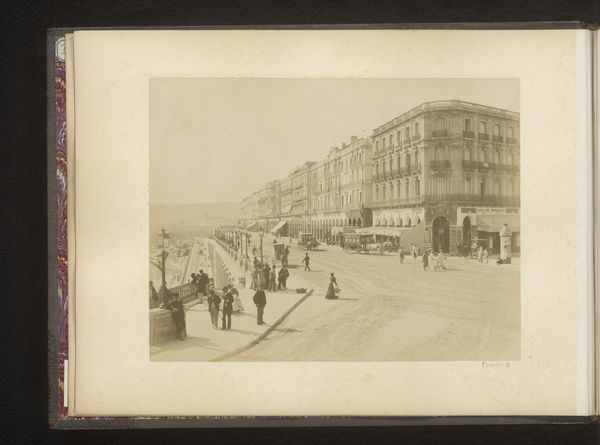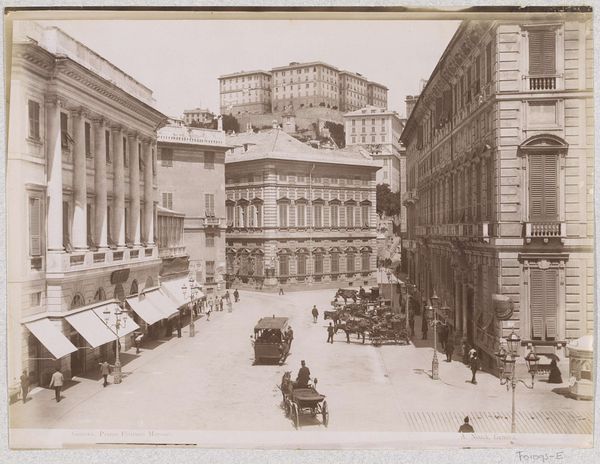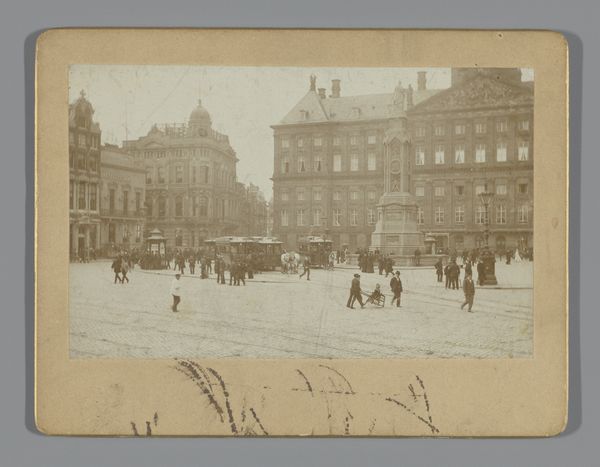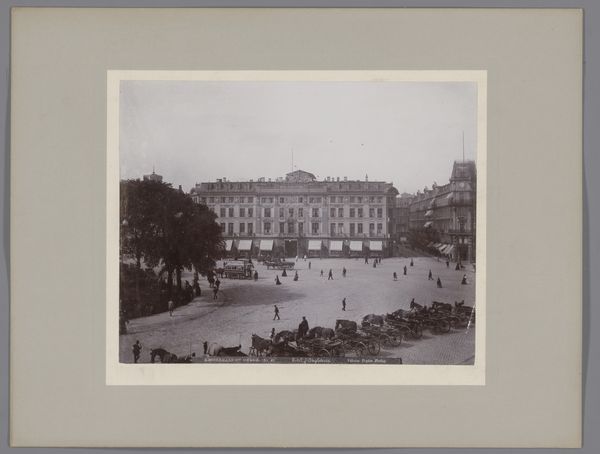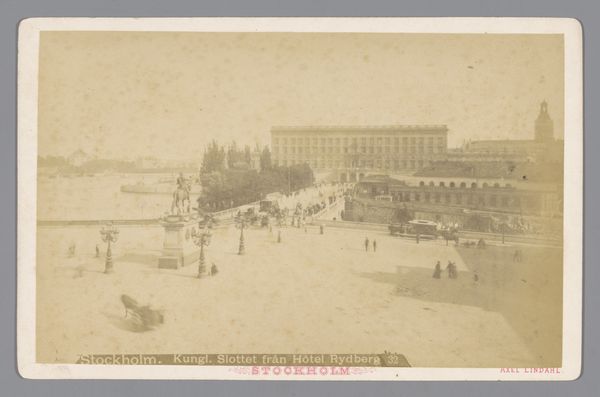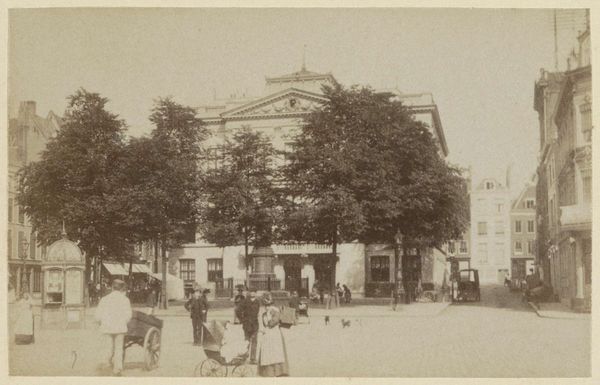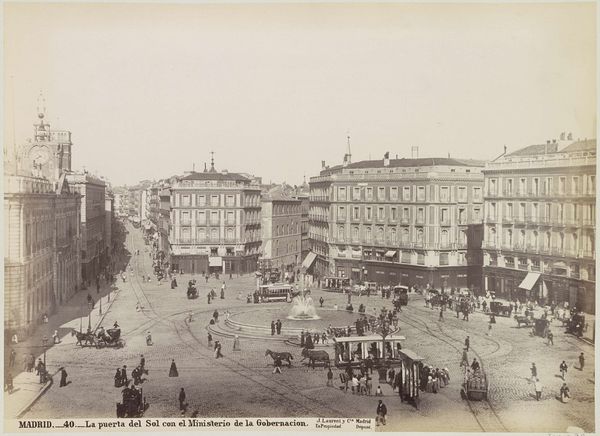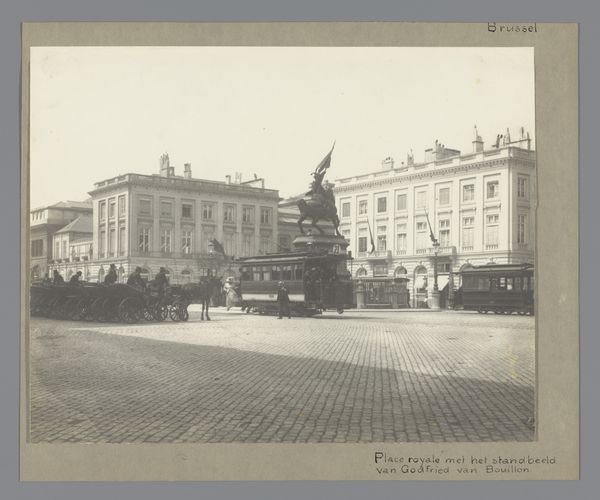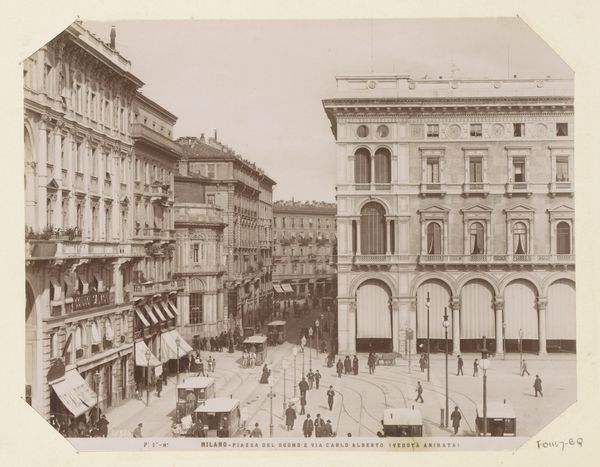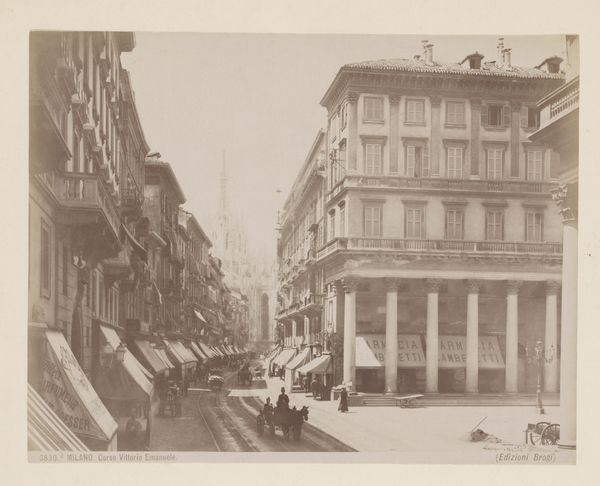
print, photography, gelatin-silver-print
#
16_19th-century
# print
#
photography
#
gelatin-silver-print
#
cityscape
#
realism
Dimensions: height 165 mm, width 209 mm
Copyright: Rijks Museum: Open Domain
Curator: Before us, we have "Gezicht op Unter den Linden in Berlijn," a gelatin silver print realized by Friedrich Albert Schwartz around 1893, held at the Rijksmuseum. The vista has such an air of solemnity, doesn't it? Editor: Absolutely. It's incredible how the texture of the print and that sort of sepia tone lend a sense of weighty historical presence to this street scene. You feel the labour of development here too—the human touch. Curator: Observe how Schwartz employs the rigid geometry of the buildings and the street itself to establish a rigorous, orthogonal framework. The repetition of architectural forms, like those windows and evenly spaced lanterns, offers visual stability and rhythmic patterning. Editor: True, and those patterns mask a fascinating, material stratification. Note the layers of human activity – the pedestrians, carriages, their interactions... the street’s lifeblood. All rendered possible via infrastructural elements forged by manual labor: paved roads, gas lighting. Photography made accessible through gelatin's complex preparation processes. Curator: Consider the deliberate positioning of the statue in the midground. It serves not just as a focal point, but as an icon, almost, creating a tension between the rigid architecture and this dynamic element. How the city's elites represented power is quite prominent here. Editor: Yes, and look closer at the production of the street itself, who has access? Are there cobbles out of place needing constant relaying by municipal employees, ensuring the street, like any artwork, upholds the interests of its commissioners. How the workers themselves don’t necessarily occupy a place in Schwartz’s composition... Curator: The artist manages a balance here – this photograph manages both historical documentation and an interesting visual dialogue, a careful calibration between light, shadow, and spatial composition that certainly engages me. Editor: Indeed. Seeing these materials rendered with such detail pushes me to further acknowledge not only what, but *how* it was made and continues to exist today. Curator: Agreed; viewing this street through our perspectives, the intersection of time, material and form offers unique depth.
Comments
No comments
Be the first to comment and join the conversation on the ultimate creative platform.
